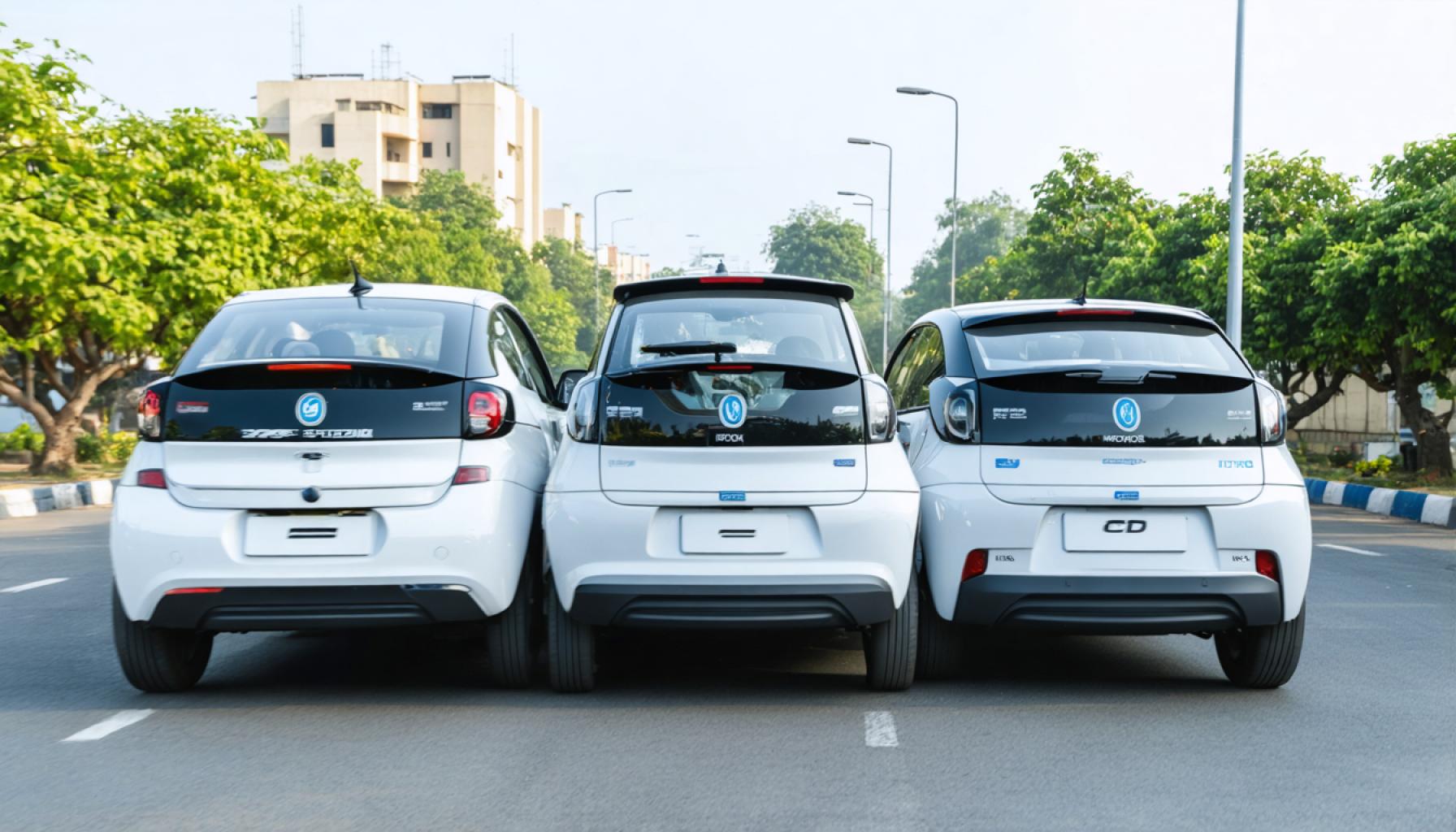- Tata Motors leads the EV market with 5,047 vehicles sold in January 2025, despite a 13.01% year-over-year decrease.
- MG Motors sees a 252.2% increase in sales, reaching 4,237 units compared to 1,203 the previous year.
- Mahindra’s sales decline with 688 units sold, down from 784 units last year.
- The Indian EV market shows 32.38% growth from January 2024, with 11,266 EVs sold nationwide.
- MG Motors receives the Green Car Award 2025 for the Windsor EV, bolstering its reputation.
- Tata plans to recover its market share with new models like the Harrier and Sierra EV.
- India’s EV market evolution is driven by innovation, as companies adapt to consumer demand for sustainable vehicles.
In the electrifying world of India’s EV market, Tata Motors has maintained its lead by selling 5,047 electric vehicles in January 2025. Despite this achievement, Tata saw a 13.01% dip from its sales in the same month last year. Meanwhile, MG Motors is electrifying the market with a 252.2% surge, selling 4,237 units compared to a mere 1,203 units the previous year. Mahindra, on the other hand, struggled with a decline, selling just 688 units compared to 784 units last year.
The overall market is buzzing with activity, demonstrating an impressive 32.38% growth since January 2024, with 11,266 EVs sold across the nation. This surge underscores a consumer shift towards environmentally friendly vehicles.
Tata Motors is not resting on its laurels, gearing up for a bold comeback with upcoming models like the Harrier and Sierra EV. Meanwhile, MG Motors gained the spotlight with the Windsor EV, a vehicle that clinched the prestigious Green Car Award 2025, adding yet another feather to its cap.
Key insights from this electrifying landscape reveal a robust demand for sustainable mobility, driven by innovation and technological advancement. As MG’s strategic expansions click with consumers, Mahindra faces challenges to rethink its approach and reclaim its share.
The question remains: Will Tata’s new models reignite its spark in the market? As innovation drives India’s EV evolution, the upcoming launches promise a thrilling ride towards a greener future. Stay tuned as the road ahead unfolds with fresh competition and groundbreaking technologies that promise to reshape India’s transportation landscape.
Power Shifts and Green Drives: What’s Next in India’s Thriving EV Market?
How is Tata Motors positioning itself to regain market dominance in the Indian EV sector?
Tata Motors is focusing on expanding its EV portfolio to reignite its market presence. With upcoming models like the Harrier and Sierra EV, Tata aims to captivate consumers with cutting-edge features and competitive pricing. These vehicles promise advanced battery technologies, longer ranges, and smart connectivity features. Tata is also enhancing its charging infrastructure to support its EVs, which could play a crucial role in regaining customer trust and market share. By focusing on these areas, Tata seeks to counteract its recent sales dip and retain its pioneering status in the EV market.
What strategic moves are fueling MG Motors’ impressive growth in the Indian EV market?
MG Motors’ remarkable growth, evidencing a 252.2% surge in sales, can be attributed to a few strategic moves. The brand’s focus on modern design, affordability, and superior technology is resonating well with Indian consumers. The Windsor EV, which recently won the Green Car Award 2025, exemplifies MG’s commitment to innovation and sustainability. Additionally, MG’s expansion into tier-2 and tier-3 cities is increasing its reach, while its robust network of dealerships and service centers is ensuring customer satisfaction and brand loyalty. This multifaceted approach positions MG Motors as a formidable player in the Indian EV sphere.
What are the challenges facing Mahindra, and how can it innovate to boost its EV sales?
Mahindra faces several challenges, including declining sales figures and competition from both international and domestic players. To address these, Mahindra needs to innovate with new models that emphasize performance, range, and affordability. Investing in research and development for advanced electric powertrains and battery technologies will be crucial. Furthermore, enhancing its marketing strategies to emphasize sustainability and innovation can attract environmentally conscious consumers. By aligning its offerings with consumer demands and enhancing after-sales service, Mahindra has the potential to rejuvenate its EV segment and recapture market confidence.
Useful Links
For more information on the latest trends in the Indian EV market, visit:
– Tata Motors
– MG Motors
– Mahindra
Market Forecasts and Trends
The Indian EV market is predicted to continue its upward trajectory, with a projected annual growth rate of over 25% in the coming years. Government initiatives, including subsidies for EV purchases and investments in charging infrastructure, are significant driving forces. Additionally, consumer preference shifts towards greener alternatives and technological innovations will likely foster a diverse and competitive market landscape.
Latest Innovations and Sustainability Efforts
Manufacturers are continuously innovating with sustainable practices, including using recycled materials for vehicle manufacturing and advancing battery recycling technologies. These efforts not only reduce carbon footprints but also align with global sustainability goals. Companies are also exploring alternatives like solar panel integration and lightweight materials to enhance vehicle efficiency.
Conclusion
As the Indian EV market evolves, manufacturers like Tata Motors, MG Motors, and Mahindra must navigate a competitive landscape crowded with both challenges and opportunities. Strategic innovation, market understanding, and sustainability focus are key for these brands to thrive in the fast-paced and environmentally-conscious market that India is becoming. The future promises not just growth, but transformative shifts that will redefine urban mobility and sustainability.














